The History and Art of Maijishan Grottoes, the Pearl of Silk Road (Ⅰ) The Series Ⅲ of Silk Road Grottoes
When it comes to China’s grottoes art, people first think of Dunhuang Mogao Grottoes, Luoyang Longmen Grottoes and Datong Yungang Grottoes, while Maijishan Grottoes, which are also called the four major grottoes with them, are quite unknown to boudoir people, but this does not affect their unique historical and artistic value.
I. Geographical location and construction background of Maijishan Grottoes
Tianshui, known as "Qin Zhou" in ancient times, is located in the upper reaches of Weihe River at the end of Qinling Mountains in the southeast of Gansu Province, and is known as "Longshang Jiangnan". Because it is adjacent to Chang ‘an in Guanzhong in the east and borders Shaanxi, Gansu, Sichuan and Nanjing, it has been a battleground for military strategists and an important transportation and economic and trade center on the Silk Road since ancient times. The well-known Maijishan Grottoes fall on a lonely cliff on the branch of Xiaolongshan at the northern foot of Qinling Mountain, 30 kilometers southeast of this ancient city.
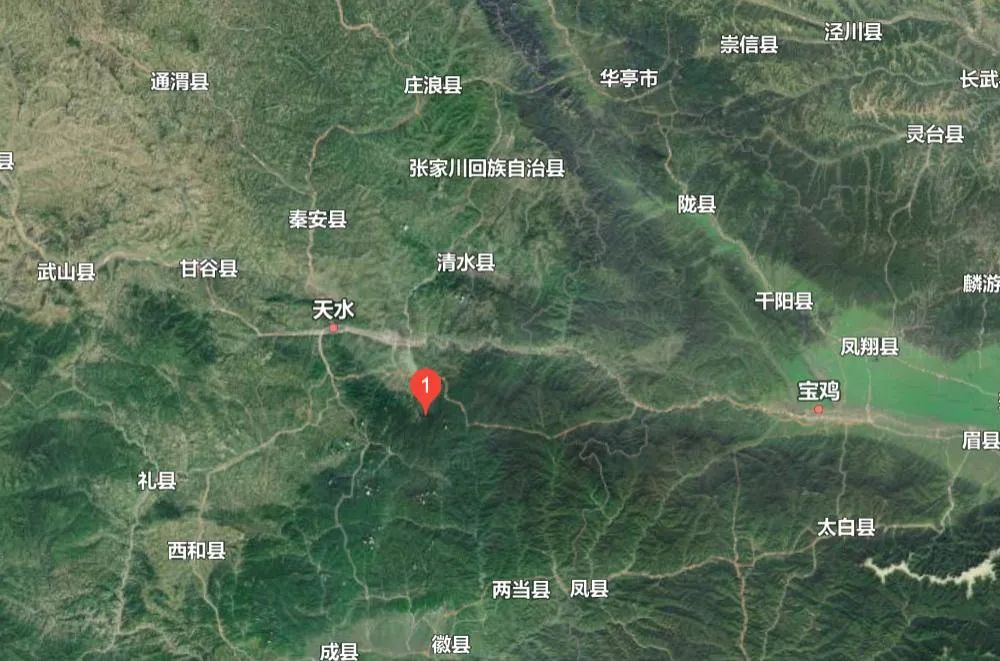
▲ The geographical location of Maijishan Grottoes. (Source: Baidu Map)
Maijishan, also known as "Maijiya", got its name from Biography of High Monks and Biography of Xuangao, which records that Xuangao, a high monk of Shiyang Temple in Guanzhong, lived in seclusion in Maijishan because of the turbulent situation. Li Huanchuan, a book of Wei Dynasty, recorded that in the third year of the Northern Wei Dynasty (506), Qin Zhou wrote Lu Gou ‘er’s rebellion, and Lee Huan, the secretariat of Liangzhou, "ordered Shi Changle and others to go to aid from Maiji Cliff".
As for why we should call this strange peak standing alone at the end of the mountain ridge like this, Wang Renyu, a writer and great poet of the Five Dynasties, has a wonderful description in "Yutang Gossip Maijishan": "Maijishan, who crosses the Qing River in the north, gradually moves south; Five hundred miles of hills and mountains, half of Maijishan; Rise a stone, millions of seeks; Looking at the group, like a farmer’s wheat, it is named. "
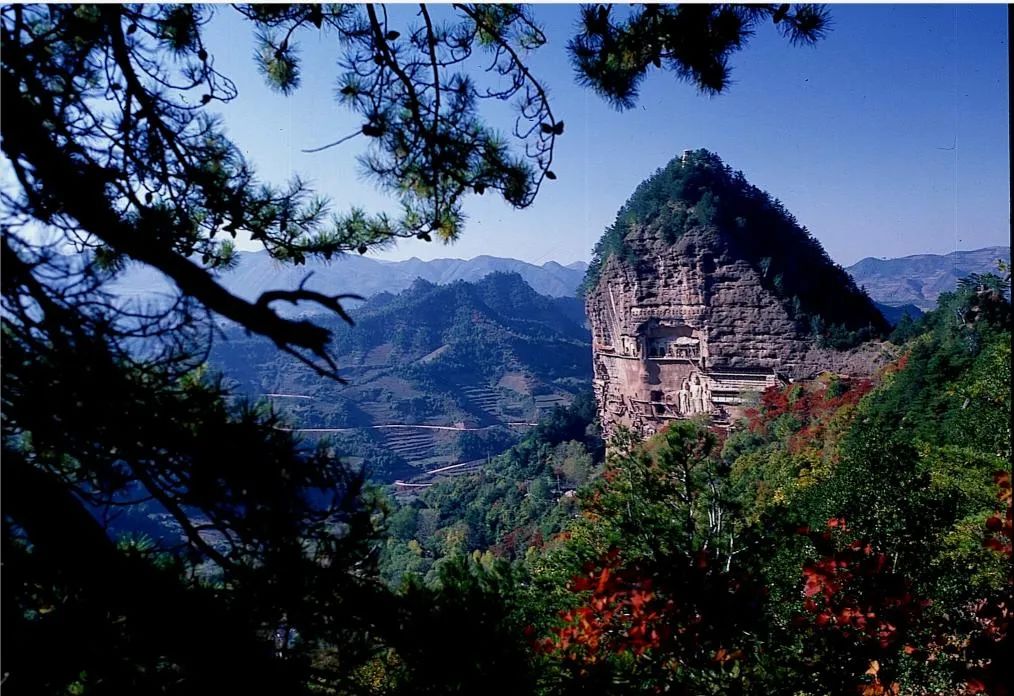
▲ Autumn panorama of Maijishan Grottoes. (Photo courtesy of Maijishan Grottoes Art Institute)
As for the excavation and construction of Maijishan Grottoes, according to historical records, it began in the period of the Sixteen Countries and the Late Qin Dynasty. Since then, the Northern Wei Dynasty, the Western Wei Dynasty, the Northern Zhou Dynasty, the Sui Dynasty, the Tang Dynasty, the Five Dynasties, the Song Dynasty, the Yuan Dynasty, the Ming Dynasty and the Qing Dynasty have continued to build, which lasted for more than 1,600 years. There are 221 existing caves and caves, 3,938 statues, 10,632 murals, nearly 1,000 square meters, and a large number of steles, scrolls, documents and other cultural relics.
Known for its beautiful natural and cultural landscapes, lifelike clay sculptures, magnificent murals of the Northern Dynasties and breathtaking cliff pavilion plank road architecture, it is well-known at home and abroad.It is also the first batch of national key cultural relics protection units announced by the State Council on March 4, 1961, and a national five-A-level tourist scenic spot. On June 22, 2014, it was officially recognized as a world cultural heritage by UNESCO as an important part of the "Silk Road: the road network of the initial section and the Tianshan Corridor".

▲ A glimpse of Maijishan Grottoes. (Source: Maijishan Grottoes official website)
The Wei, Jin, Southern and Northern Dynasties was an important period of great political turmoil, great cultural changes and great ethnic migration in the history of China, and it was also a critical stage of the intersection, collision and integration of foreign Buddhist art and China traditional culture. The Maijishan Grottoes, located at the southern route of the Silk Road at that time, were the true portrayal and precious historical remains of this change in Guanzhong and Longyou areas at that time.
AD 3-mdash; In the 4th century, Indian Buddhism, which was active in Central Asia, the Western Regions and Xinjiang, entered the Central Plains along the ancient Silk Road through the Hexi Corridor, and Chang ‘an, Luoyang, Chengdu and Jiankang (Nanjing, Jiangsu) became important centers of Buddhist culture communication at that time. Tianshui (formerly known as Qin Zhou), which is adjacent to Chang ‘an, has also become one of the earliest areas where Buddhism was introduced into the mainland. In the second year of Yongjia in the Western Jin Dynasty (308), Zhu Fahu, a monk, retranslated the "Pu Yao Jing" in Tianshui.
Bo Fazu, an eminent monk in Chang ‘an, promoted Buddhism in Guanlong all the year round, and he had a great influence among believers. He was known in history as "the right side of the letter, and it was like a god." Later, Fazu was killed by Zhang Fu, the secretariat of Qin Zhou, which caused the Qiang people in Tianshui and Longxi to be angry. They rose up and attacked Qinzhou City, and Zhang Fu was killed as a result. All Qiang Hu felt that their revenge had been reported, so they dismembered Fazu and took it back to the tower to support him as a souvenir. This incident shows that Buddhism had penetrated into all social strata in Qin Zhou at that time, and Buddhist activities had become an important part of people’s daily spiritual life.
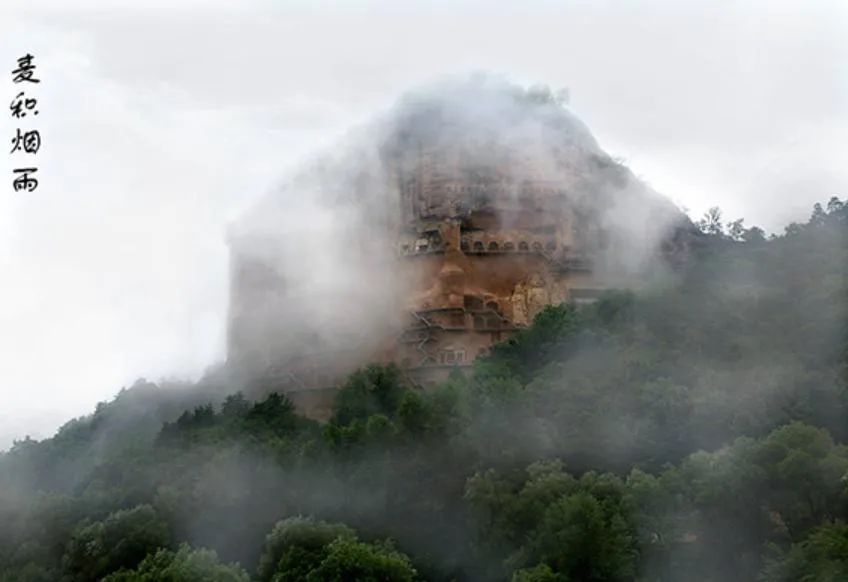
▲ Wheat accumulates misty rain. (Source: Maijishan Grottoes official website)
Maijishan, as a peculiar Danxia landform in Qin Zhou, has attracted people’s attention since the Eastern Han Dynasty. At that time, Wei Xiao, who confronted Emperor Liu Xiu of Han Dynasty, built a summer palace in Diaochao Valley behind Maijishan. Yu Xin, a great writer in the Northern Zhou Dynasty, called Maiji Cliff "the famous mountain in Longdou and the spiritual mountain in Hexi", and the Annals of Qinzhou also called its mountain "the crown of nymphs in the Qin Dynasty". It can be seen that the ancients have long regarded Maijishan as a place to cool off and ask questions.
During the Northern and Southern Dynasties, meditation and image viewing were one of the most important religious practices of monks in the northern region, and Maiji Mountain, with its quiet environment and beautiful scenery, naturally attracted the attention of monks. When Xuangao arrived here, there were already eminent monks from the Qin Dynasty meditating here, and the number of monks had reached as many as 100, which shows that the Buddhist activities in Maijishan were flourishing at that time. There is no clear evidence as to whether there was a cave sculpture in this period. However, it is a historical fact that Maijishan Grottoes were built in the late Qin Dynasty, according to the actual needs of monks’ meditation and the absolute position of the idea of Buddha III advocated by Yao Xing in the late Qin Dynasty.
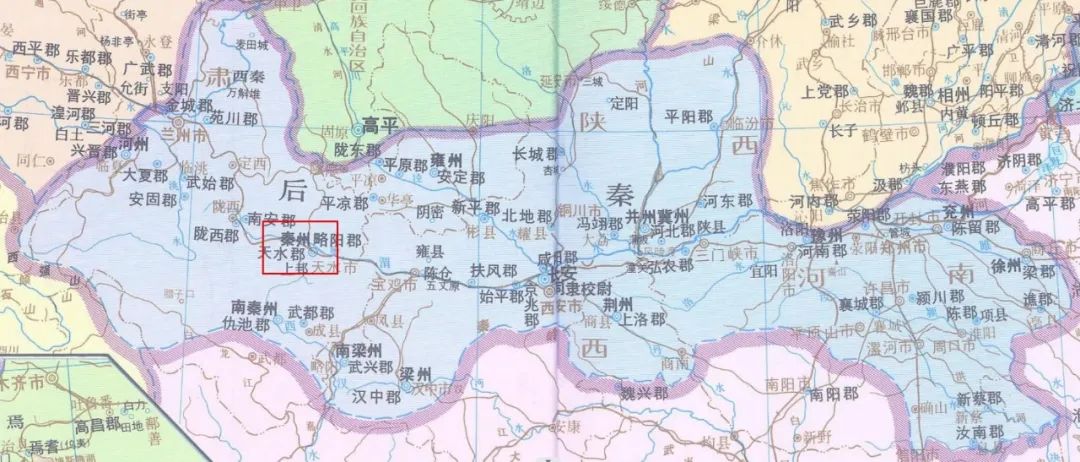
▲ Qin Zhou in the post-Qin Yao Xing era. (Source: Atlas of Chinese History)
With the southward migration of Jinshi, the separatist regimes of large and small established by the northern nomadic tribes of Di, Qiang, Xiongnu and Xianbei launched a long-term scuffle in the northern region centered on Chang ‘an, Luoyang and Yecheng, and the people suffered from war and all kinds of displacement, plus the rulers’ admiration for Buddhism.Cave temples in northern China, including Maijishan Mountain, have sprung up like mushrooms after rain, just like strings of pearls embedded along the ancient Silk Road, which together constitute a brilliant chapter of China grottoes art and become an important carrier and window for people to know and understand the China, nationalization and secularization of foreign Buddhist art, as well as the cultural and artistic exchanges and interactions between ancient China and the West.
Second, the grotto statues in the Northern Wei Dynasty
There are about 90 caves in the Northern Wei Dynasty in Maiji Mountain, which are divided into early, middle and late stages. In the early stage, there were caves 74, 78, 90, 100, 128 and 165, mainly concentrated in the middle and lower part of the west cliff.

▲ Interior of Cave 78, early Northern Wei Dynasty.
Its shape mostly imitates the dome-top tent style of ethnic minorities, and the statues are mainly three Buddhas and Maitreya. Later on, besides the Three Buddhas, the statues in the grottoes began to increase in themes such as Jiaojiao, Thought, Sakyamuni, Duobao and seven buddha, which fully reflected and embodied Mahayana Buddhism’s thought of Fahua Statue. The style of the sculpture shows strong characteristics of Gandhara in Central Asia and Hutulu in India, as well as the tall, burly and straight modeling characteristics of the northern nomadic people, which is highly consistent with the famous statue of Tanyao Cave in Yungang, and the excavation time is about 460 AD.
In the mid-Northern Wei Dynasty, the grottoes were small in size, and their shapes showed Chinese characteristics, mostly square and flat-topped. There are many Buddhist temples or shallow arches in the grottoes, and there are many rows of small ear niches or altars on the wall. Typical examples are caves 23, 76, 86, 89, 92, 93, 115, 155, 159 and 163.
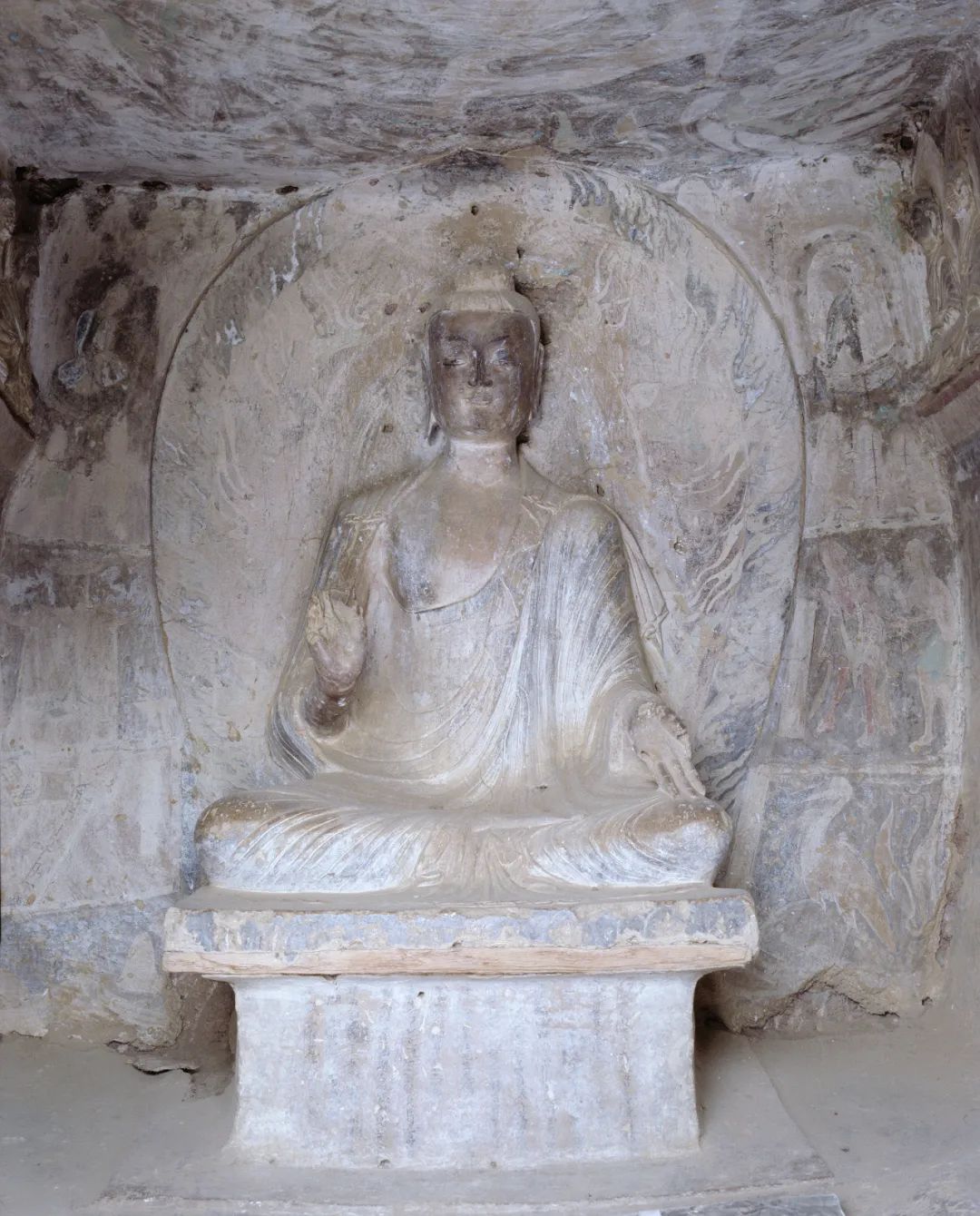
▲ Sitting on the main wall of Cave 115, in the middle of Northern Wei Dynasty.
The subject matter of statues in the grottoes is still dominated by three Buddhas, with one Buddha and two Bodhisattvas. At the same time, disciples began to appear. In addition, there are a large number of shadow-sculpted buddhas, bodhisattvas, disciples, heaven and man, flying, supporters and so on with different postures and exquisite sculptures. In terms of sculpture style, whether it is Buddha, Bodhisattva, disciple, flying and provider, the shape of the statue has changed from tall and burly in the early days to stretching and straight, the facial expression has changed from dignified and resolute to delicate and quiet, and the costume has also changed from soft body-fitting, bare-chested to drooping collar and skirt.Interestingly, in many caves, Hu and Han styles often complement each other:Wearing a round neck or a topless cassock, sitting on both sides of the Buddha, the Han costume with a flattering belt and a light posture is flying on the face, reflecting a strong atmosphere of changes in the times. This change mainly stems from the fact that TaBaHong, Emperor Xiaowen of the Northern Wei Dynasty, officially moved to Luoyang in the 18th year of Taihe (494). In order to speed up the pace of sinicization, he banned wearing Hu clothes, changed Han clothes, banned Hu dialect, changed Xianbei surname to Han surname, and vigorously advocated intermarriage between ethnic groups, re-establishing the gate system of the Northern Dynasty.
It is under the influence of this series of sinicization measures that the old customs of Xianbei nobles can be fundamentally changed, and finally the central plains cultural etiquette system with Confucianism as the core is fully accepted and absorbed. At the same time, it also affected the Qin Zhou area under the rule of the Northern Wei Dynasty. However, because it has long been the main inhabited area of the Bian, Qiang, Xiuguan and Tu nationalities, this change has a certain lag.
The late Northern Wei Dynasty was the heyday of Maijishan Grottoes excavation, and the representative grottoes were caves 81, 83, 87, 121, 122, 133, 142 and 154. The grottoes are more complex and diverse in shape. There are many ancillary buildings in the grottoes, such as abutment, Buddha’s seat, shallow niche, altar and so on, and the top has also evolved from a flat square to a square set of bucket tops.

▲ Bodhisattva and disciple in Cave 121, late Northern Wei Dynasty.
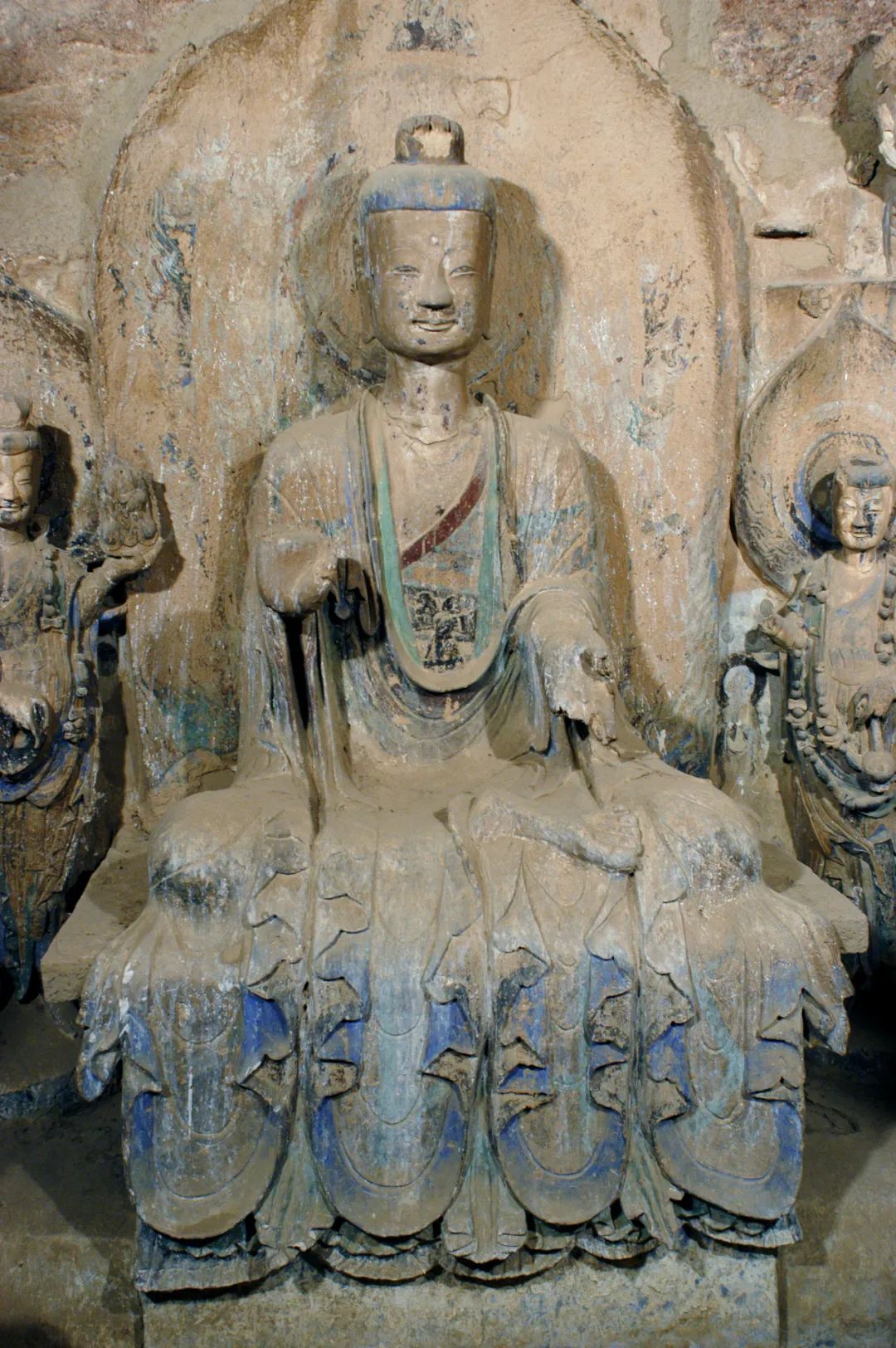
▲ Sitting on the main wall of Cave 142, late Northern Wei Dynasty.

▲ The smile of the Shami in Cave 9, Cave 133, in the late Northern Wei Dynasty.
In addition to small and medium-sized caves in the traditional sense, large caves like Cave 133 began to appear, with a height of 5.80, a width of 12.20 and a depth of 10.83 meters. The cave is complex in structure, densely covered with shrines, rich in sculpture contents and diverse in theme combinations, forming the wonder of "Buddha shadows everywhere and flying all over the walls", which is amazing.
Under the influence of Longmen Grottoes and other central plains areas, the sculpture style in this period has all been transformed into the Han-style characters in the praise belt.The Buddha’s face is handsome and smiling, with a straight nose and a small mouth, shoulders and chest, and a wide cassock. The clothes are hung over the Buddha’s seat, and the surface of the clothes is carved with sparse and rigid clothes lines. Bodhisattva wears a high bun, with a delicate face, and many ornaments such as collars, earrings, bracelets, armbands, wreaths, etc. She wears a shirt with wide sleeves, a waist-length skirt, high heels, and crosses the front of her belly or puts it on her knees after piercing. One hand holds the lotus bud, the other hand holds the silk, and the expression is quiet and graceful. Disciples are all dressed in robes, and their facial expressions are immature and pure, or naive, or brooding, or suffering from vicissitudes.
There are many kinds of supporters: some wear crowns and hats, wide robes and big sleeves, some have high hair bun and long skirts mopping the floor, some hold utensils and walk with their children, and some stand with their hands chest-high, reverent and respectful. It fully shows the distinctive character characteristics, rich inner world and yearning for the pure land of Buddhism.
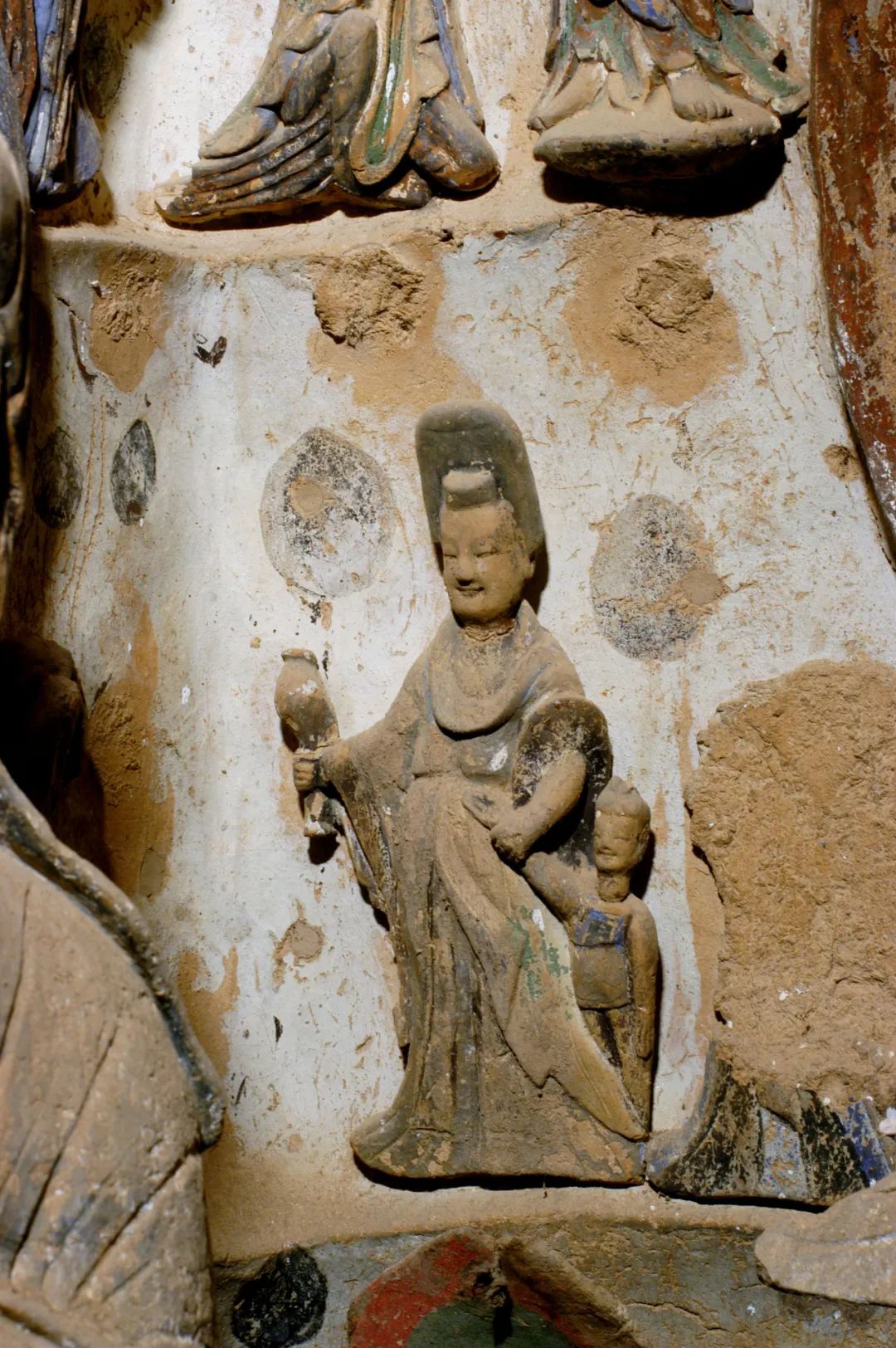
▲142 Cave Shadow Plastic Supporter, Late Northern Wei Dynasty.

About the author:
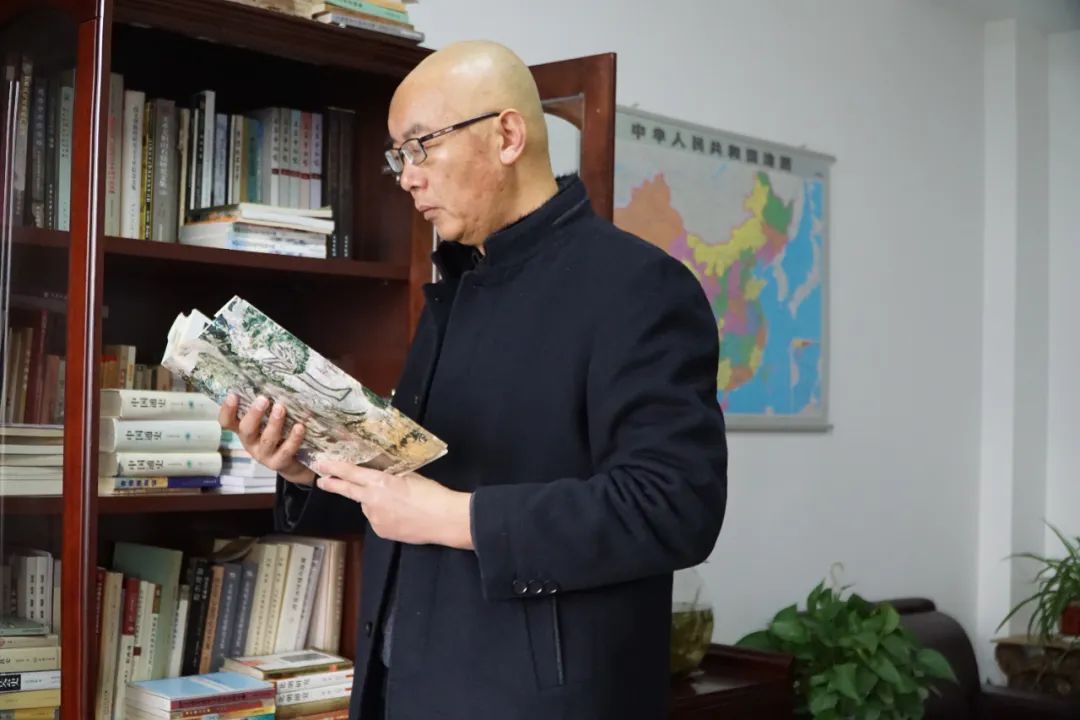
Sun Xiaofeng, doctor of historical philology (including Dunhuang studies), research librarian of Dunhuang Research Institute. Secretary-General of Academic Committee of Maijishan Grottoes Art Institute of Dunhuang Research Institute, and editorial board of Dunhuang Research. He has undertaken, presided over or participated in the investigation of small and medium-sized grottoes in the eastern part of Gansu Province, the compilation of Tianshui General History, the compilation of Gansu Grottoes Records, the declaration of Maijishan Grottoes as a world cultural heritage, and the investigation of the Great Wall resources in Gansu Province. In addition, he published 2 monographs and more than 40 academic papers. He has presided over, undertaken or participated in many national, provincial and ministerial social science projects, and is currently presiding over the national social science key project "Archaeological Report of Caves 120-127 of Maijishan Grottoes".
Producer | Yang Xinhua
Coordinating | Kang Kunquan, Hu Jun, Liu Jia
Editor | Guo Hui Qi Zitong
Production | Hu Qi